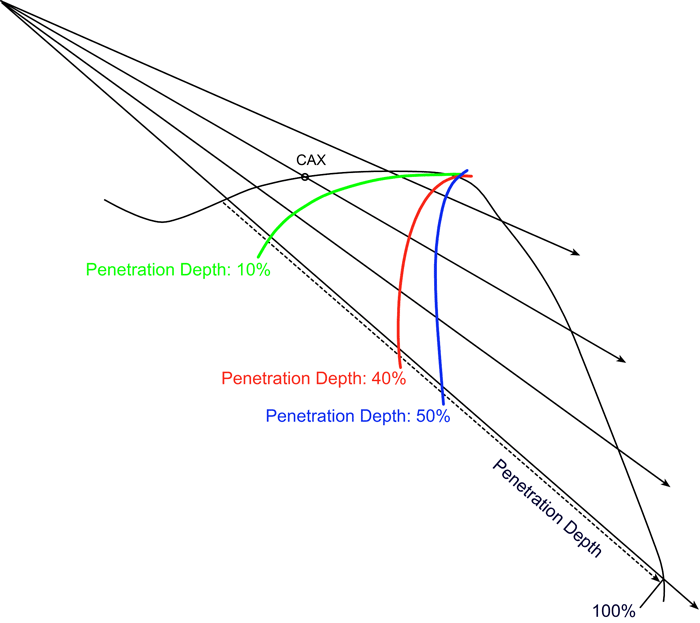The ISC is a technique which "compensates" uneven body surfaces to give homogeneus dose distributions in a certain depth. It works well for tangential breast treatments. The plan is created using the Eclipse treatment planning system.
The basic ISC steps are:
- On the Simulator: The patient is positioned as usual, and the best treatment field geometry (Field Size, Gantry, Collimator) is determined. This creates the Treatment Fields in ARIA.
- On the CT-Scanner: The patient is scanned with a slice thickness of 5mm.
- In Eclipse: The CT-data are contoured, the Treatment Fields are assigned to the CT-3D-volume.
- A "New ISC" accessory is added to each field.
- The desired penetration depth is chosen >> Eclipse calculates the "Optimal Fluence".
- Dose Calculation is started >> Eclipse prompts for DMLC settings: choose "Fixed Jaws" >> Eclipse calculates the DMLC sequences ("sliding windows"), followed by the dose distributions.
- Dose distributions are evaluated, and modified as desired with painting tools. Dose is recalculated. Etc.
When generating the compensators, each treatment field is treated seperately. This means that the fields "do not know of each other". First each fanline of the beam is evaluated with respect to the chosen penetration depth (the distance between the entry point and exit point, see Fig.1).

Fig.1: Schematics of left breast, medial tangential field. Four fanlines are drawn. By choosing a penetration depth, the user implicitly specifies a certain irregular surface inside the patient. The value of 10% is drawn only to show the definition - realistic values, which give homogeneous dose distributions, are around 45%.